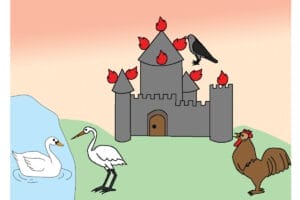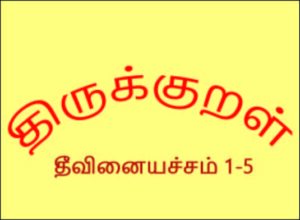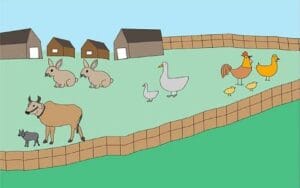In this episode, let’s take a look at the expository or nonfiction text structure.
What is the purpose of the textbooks our children use in school? They give information. Some articles try to argue for a point of view and others give directions.
As we said earlier, text structure is about how the author organizes the information in the text. When students recognize the text structure, they understand whether the author compares two elements, discusses a problem and how it can be resolved, or the steps leading to an event.
Many kids read articles but cannot identify the main idea and key details. During exams, they read the entire chapter aloud and memorize it. What do we call this? Mugging, learning by heart — actually that is rote learning. They don’t know which information is essential and which isn’t. Suppose these children learn to identify text structures. In that case, their ability to find the main idea and supporting details improve. Their test preparation relies on understanding the topic rather than rote learning. What happens when you understand what you read? You can summarize the information, and remember it all. That’s a good thing for our kids, don’t you agree?
Types of expository text structures:
There are five types of expository text structures. As children move to high school, there are a few more, but for primary classes, we usually focus on the following five:
1.Description
2. Sequence/order
3. Compare and contrast
4. Cause and effect
5. Problem and solution
How does the reader find out which of these structures is used in the text? Readers learn to identify text structure by the clue words or signal words authors use. Let’s look at each of these in detail.
Description:
The first expository text structure is description: This is precisely what the title says. The text describes a topic, person, place, or thing by giving details. You may have read book reviews where they say, the author paints a picture with words. That means the author has used the ‘description’ text structure.
The clue words for ‘description’ text structure are “for example, such as, characteristics are, looks like, consists of, for instance, including, to illustrate.” These words signal to the reader that the author is describing something or someone.
To give you an example, have you ever looked up details on a particular kind of silk saree, say Benaarasi or Kanchipuram? Those articles use the description text structure. Now in textbooks, your child might read the description of amoeba or the Taj Mahal.
Sequence/Order:
The second type of text structure is sequence: This is the order in which events take place. The author can use numerical order or chronological order. Which subject comes to your mind as soon as you think sequence or order? History! History is about events in chronological order.
But, that’s not all! Supposing the author wants to tell you how to make something, you will find that the directions use the sequence text structure.
The clue words are “first, second, third, next, then, before, previously, prior to, next, after, later, to start, now, meanwhile, simultaneously, at the same time, following, last, finally, direction.” These words signal to the reader the order in which the events or actions take place.
Say your child is learning about the Indian Independence movement. The struggle for Independence comes with several significant events that occurred in chronological order.
At home, you want to make channa masala, you must follow the steps in the correct order.
If the orders are mixed up, the events leading up to Independence will not make sense because each event was significant in moving us towards independence. Neither will your channa masala turn out right.
Compare and Contrast:
The third expository text structure is compare and contrast: This text structure shows how two or more events, objects, or people are the same or different. Compare and contrast is useful in almost all academic subjects. You must be familiar with the Venn Diagram. Venn diagram is a commonly used graphic organizer to compare and contrast.
The clue words here are “however, alike, same, similarly, just as, in contrast, different, differs from, and, also, both, either, than, as well as, however, more, less, not only, yet, although, on the other hand.” These words signal that the author is comparing and contrasting two elements. It brings to mind questions parents have about state board versus CBSE for their children. It is a compare and contrast exercise, isn’t it?
Problem and Solution:
The fourth expository text structure is problem and solution: The author lays out a problem and then gives one or more possible ways to solve it. You’ll see this used a lot in science, math, and social studies books.
The clue words for this test structure are “challenge, trouble, problem, puzzle, the difficulty, because, since, so that, as a result, therefore, thus, leading to, question, answer, fix, solved, how.” These words tell the reader that the author highlights a particular problem in that context and then provides possible solutions.
The example that popped up in my mind for this text structure was ‘Fair and Lovely.’ You see, the company took a perceived problem in our society, dark or dusky skin tone, and marketed it as a real problem. Then they offered their product as the solution for the problem. The more common problem our kids hear in the news nowadays is climate change. Many solutions are offered, including legislation, reducing our carbon footprint, reusing and recycling, etc.
Cause and Effect:
The last expository text structure is cause and effect: Here, the author shows how one event (the cause) made another event happen (the effect). A typical clue here is the if/then pattern. The clue words are “if/then, as a result of, because of, in order to, caused by, outcome, as a result of, due to, led to.” These words signal that the author discusses an event or action with a purpose—to find why it happened and what happened as a result.
Science books and history books use this text structure. For instance, would there have been a Dandi march without the salt tax?
Did the cause and effect and sequence trigger your memory? You’ve used these in your school days too. But you probably didn’t think about learning them for their own sake as a tool to comprehension. And that’s what studies say we must do. We should teach our children that text structures are tools to help understand nonfiction text.





